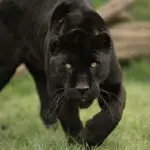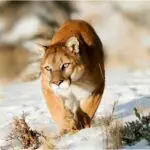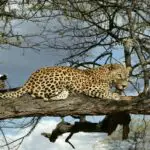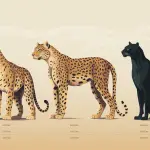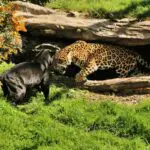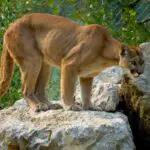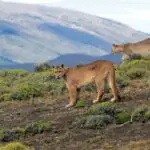Panthers are not a single species of animal. This term is actually used to refer to big cats with black or melanistic coats!
There are three kinds of animals that usually go by the term “panther” – black jaguars, black leopards, and mountain lions.
Mountain lions go by many names, and even have the record for the most English names.
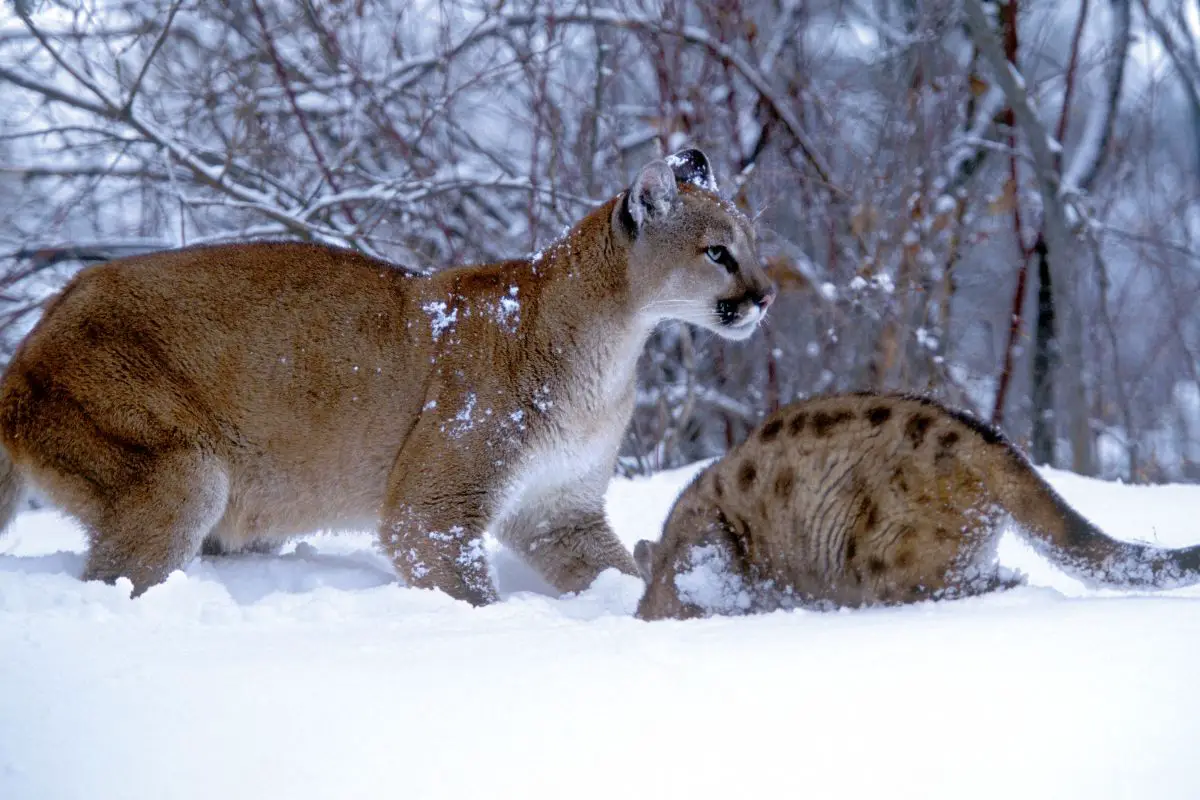
They are called pumas, cougars, catamount, and many other names. The term “panther” has also been used to refer to them, even when they aren’t melanistic, but this name isn’t as common.
There are six living subspecies of mountain lions, and one extinct subspecies – the Eastern mountain lion.
For this article, we will split the “panther” section into two – jaguars and leopards.
That way, it’s easier to track which animal we are actually talking about, as there are many differences between them!
When we’re talking about leopards, we are discussing the leopard commonly known as the African leopard, and its distinct subspecies, rather than the snow or clouded leopard.
To find out all the differences between jaguars, leopards, and mountain lions, keep reading!
Panther Vs Mountain Lion: The Main Differences
Classification
Panther
Jaguar
- Also known as: jaguar
- Average lifespan in the wild: 12-15 years
- Scientific name: panthera onca
- Genus: Panthera
- Family: Felidae
- Order: Carnivora
- Class: Mammalia
- Kingdom: Animalia
- Phylum: Chordata
- Height: 2-3 feet at the shoulder
- Weight: 220-350 lbs
- Length: 5-7 feet (head and body); 2-3 feet (tail)
- Conservation status: varies depending on subspecies, typically near threatened
- Number of subspecies: 9
Leopard
- Also known as: varies depending on subspecies and location
- Average lifespan in the wild: 12-17 years
- Scientific name: panthera pardus
- Genus: Panthera
- Family: Felidae
- Order: Carnivora
- Class: Mammalia
- Kingdom: Animalia
- Phylum: Chordata
- Height: 2-3 feet at the shoulder
- Weight: 60-200 lbs
- Length: 3-6.2 feet (head and body); 3.5-4.5 feet (tail)
- Conservation status: endangered
- Number of subspecies: nine
Mountain Lion
- Also known as: puma, cougar, panther, catamount, red tiger, deer tiger, painter
- Average lifespan in the wild: 10-13 years
- Scientific name: puma concolor
- Genus: Puma
- Family: Felidae
- Order: Carnivora
- Class: Mammalia
- Kingdom: Animalia
- Phylum: Chordata
- Height: 2-3 feet at the shoulder
- Weight: 64-220 lbs
- Length: 3.25-5.25 feet (head and body); 23.5-33.5 inches (tail)
- Conservation status: varies depending on subspecies, typically least concern (population decreasing)
- Number of subspecies: seven living subspecies, one extinct
Appearance And Characteristics
Panther
Jaguar
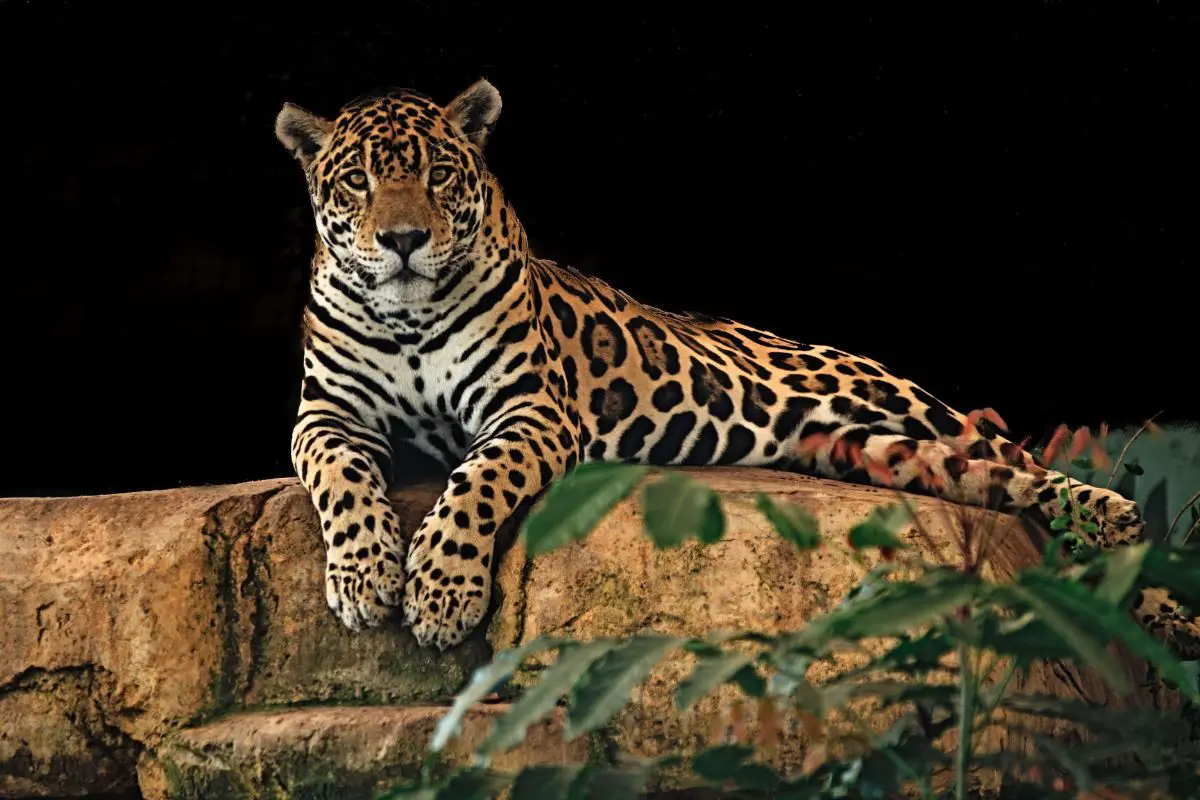
Jaguars can reach lengths of 5-7 feet from their note to the base of their tail, and the tail can be a further 2-3 feet. In total, they can reach lengths of 9-10 feet.
These animals typically weigh between 220-350 lbs and can be three feet at the shoulder.
They are bulkier than other cats like mountain lions, and have rounded faces.
It has a beautiful yellow-tan coat with black rosettes.
The shade of the base color may vary depending on where the animal is located, as jaguars in thick rainforests typically have a more golden color.
Rosettes of jaguars are like jagged black circles with dots of black inside them.
As panthers are black or melanistic jaguars, their fur is black rather than the yellow brown coloring.
Even when they are black or melanistic, the rosettes are still visible, though less noticeable.
Adults are stocky and very muscular. Cubs are born with blue eyes.
As the cub gets older, their eyes color will change to the golden or red-yellow that adults have.
Leopard
Much like jaguars, leopards also have a yellow-tan coat with black rosettes.
The shades can also vary depending on the environment they are in, such as deserts or forests. Paler shades are usually seen in desert locations, and richer colors in rainforests.
As panthers are black or melanistic leopards, they have fur that is black rather than the yellow brown coloring.
Even when melanistic, the rosettes are still visible, though less noticeable.
The rosettes of leopards do not have any black markings inside them, making the pattern very distinguishable.
Cubs are born with blue eyes, but eventually turn brown with age.
In terms of size, leopards can weigh up to 200lbs, and measure 6.3 feet long.
These animals also have extremely long tails, which can be over 4 feet long.
Mountain Lion
The mountain lion is a large, tan cat with a white or gray belly and chest. Their color can vary slightly depending on where in the Americas they are.
However, they will always be a shade of tan or a tawny brown unless they have a mutation.
A mountain lion will also have a few black markings. These markings will be around the animal’s snout, the tips of their ears, and the tip of their tail.
Adults have eyes that can appear to be a green-brown or yellow color.
Mountain Lion cubs are covered in black spots to help them blend into their surroundings, but have the same tan or tawny colored fur as their parents.
Compared to adults, the young have more black markings.
Larger animals are closer to the poles and will be in counties like Alaska and Argentina or Chile.
Closer to the equator, in countries like Colombia, Ecuador, and Brazil, mountain lions are usually smaller.
These animals typically only reach lengths of around 5 feet, and their tails are between 23 and 33 inches long.
From nose to the tip of the tail, a mountain lion can measure up to 7.7 feet long.
To the shoulder, they can measure up to a maximum of 3 feet, and they can weigh up to 220 lbs.
Sounds And Calls
Panther
Jaguar
Jaguars cannot purr like mountain lions and house cats. However, they are known to be very vocal animals, and will grunt, mew, and roar.
The most notable sound these animals make is referred to as “sawing”.
This is because it sounds exactly like wood being sawed in half (moving in one direction).
When jaguars greet each other, they will also make a nasally snuffling noise.
This sound is thought to also be made to reassure other jaguars. If a jaguar is happy, they may start “chuffing”.
Leopard
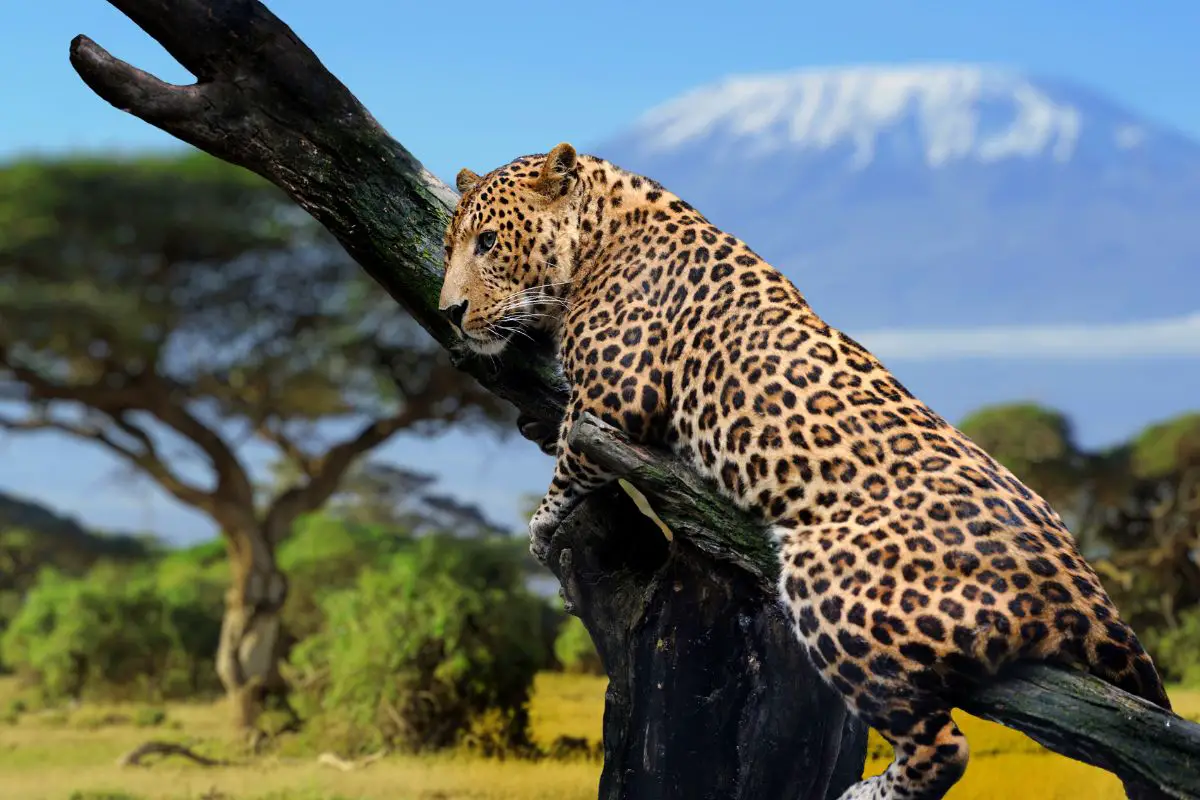
Leopards also make a variety of sounds and cannot purr.
These sounds include grunting, usually in greeting, and growling when they are threatened. Leopards will also hiss when threatened, and meow.
Like jaguars, leopards also have a saw-like sound, which is their long-distance call and common occurrence.
These animal’s roars are very low, almost baritone, and sound very hoarse.
Mountain Lion
Mountain lions can make a range of sounds, but they can’t roar like lions or tigers.
A mountain lion will growl and hiss, like a house cat, and they can also purr. Males and females are known for their “scream” that can often be heard in the wilderness.
This scream is the most well-known sound of a cougar. This sound is something that you should always look out for if you are out.
If you hear something that sounds like a screaming woman in the wild, you should move in the opposite direction.
Family
Panther
Jaguar
The jaguar is part of the Felidae family, so it is a cat.
Leopard
The leopard is part of the Felidae family, so it is also a cat.
Mountain Lion
The mountain lion is part of the Felidae family, so it is a cat.
Habitats And Range
Panther
Jaguar
Jaguars are found only in Central and South America, with a few exceptions in the southernmost states of the United States.
They primarily live in rainforests like the Amazon, or wetlands like the Pantanal.
These animals also do well in arid scrubland, grasslands, tropical forests and rainforests, mangroves, swamps, mixed conifer forests, and lowland river valleys.
As such, they are good at adapting to new surroundings, which is why they have managed to survive in Arizona!
Leopard
Leopards are the most widespread of all big cats. They are found throughout Africa, but also Asia and parts of Europe like Russia.
They thrive in a wide variety of habitats, including sub-Saharan desert regions, grasslands, wetlands, and rainforests.
Many leopards also do well in mountainous and snowy regions.
Like the jaguar, they are capable of adapting to new surroundings as long as there is prey and shelter in the area.
Mountain Lion
Mountain lions cover an extreme range – all the way from Alaska to Argentina and even southern Chile.
Because of this, they can thrive in a variety of ecosystems as long as there is prey and shelter at their disposal.
It would not be unusual to see mountain lions anywhere from mountainous regions to deserts, forests, and wetlands.
No matter where they are, cougars typically prefer to stay away from humans and too much development.
There have been instances, however, where mountain lions are seen close to cities, or in city suburbs.
Social Behavior
Panther
Jaguar
Jaguars are solitary animals for the majority of their lives. The only time they are not alone is during the mating season and when females are raising their cubs.
These animals typically only need between 10-50 square miles of territory in order to be happy.
However, territory sizes vary depending on where the animal is located.
Leopard
Leopards are solitary animals and only spend time with others when mating or caring for their cubs.
The size of these animals’ territory can vary greatly, from as little as a few square miles to a hundred square miles, depending on the available prey.
Mountain Lion
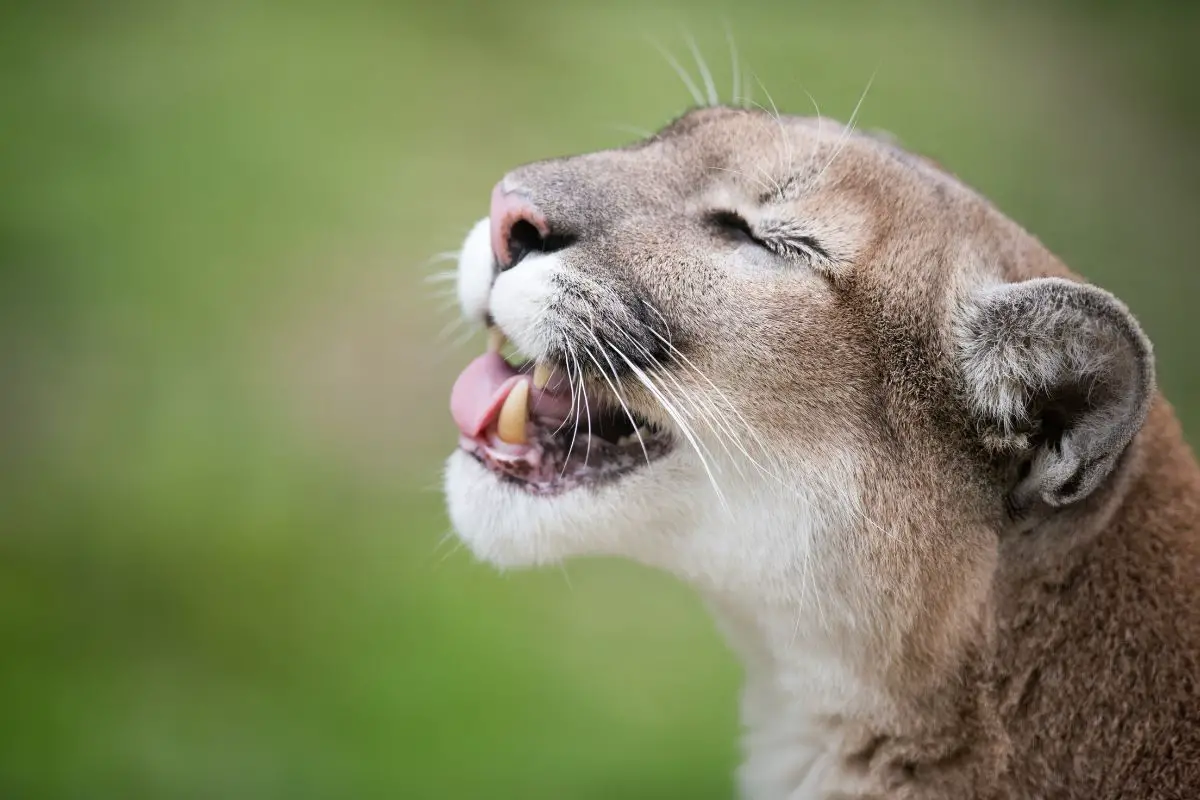
Mountain Lions are solitary animals. This means that they live alone and have their own territories.
The only time that these animals don’t live alone is during the mating season and when the female is caring for her cubs.
When solitary, these animals need between 50 and 125 square miles to roam, with males preferring more space.
Diet
Panther
Jaguar
They are obligate carnivores. This means that they can only get the nutrients they need from meat rather than vegetation.
Popular jaguar prey include tapirs, caiman, capybaras, and deer.
Leopard
They are obligate carnivores. This means that they can only get the nutrients they need from meat rather than vegetation.
Leopards will primarily prey on antelope such as impala, bushbuck, and kudu.
They are famous for pulling their catches into trees to keep it away from lions, hyenas, and other carnivores that are not capable climbers.
Mountain Lion
They are obligate carnivores. This means that they can only get the nutrients they need from meat rather than vegetation.
Mountain lions will typically hunt for things like deer or sheep, but will also eat smaller animals like mice and rabbits when available.
Breeding
Panther
Jaguar
Jaguars don’t have a set time of year for mating. They can mate at any time of the year, and they have a gestation period of only 100 days.
The females will give birth to a litter between 2-4 cubs, which will stay with her until they are at least a year old.
At this point, the cubs will no longer be fed by her, but they will remain with her for another year.
Jaguars will only reproduce every two years once they reach sexual maturity. These animals reach sexual maturity when they are 3-4 years old.
Leopard
Leopards do not have a set breeding season, and mating can happen at any time.
Breeding only happens once a year once females have reached sexual maturity at 2-2 ½ year old, and males at 1 ½ years old.
They have a gestation period of 90-105 days, after which the female will give birth to between 2-6 cubs.
These cubs will stay with their mother for approximately two years, until they can fend for themselves.
Mountain Lion
There is no set breeding or mating season for mountain lions.
Mating can happen at any time of year, but most mountain lion births take place in the late winter or early spring. Females will breed every two years.
These animals have a gestation period of 90 to 96 days, then will give birth to 1-5 cubs. These cubs will stay with her until they are ready to live on their own.
Who Would Win In A Fight – A Panther Or A Mountain Lion?
One-on-one, a jaguar would beat both a leopard and a mountain lion. Jaguars are larger and much stronger.
Final Thoughts
There you go! Although “panther” doesn’t refer to a distinct species, there are plenty of differences between a jaguar, leopard, and mountain lion.
All three animals are large cats, but they all have distinct appearances.
Mountain lions are unique among the three, and they do not have notable rosettes.
However, in terms of range and location, leopards stand out as they are found in Africa, Asia, and parts of Europe.
Both jaguars and mountain lions are found in North, Central, and South America.
- Sink Your Teeth Into This: Analyzing the Powerful Lion Bite Force - September 8, 2023
- Siberian Tigers: Everything You Need To Know - September 4, 2023
- Do Lions Eat Humans? Understanding Lion Aggression and Risks - September 4, 2023

